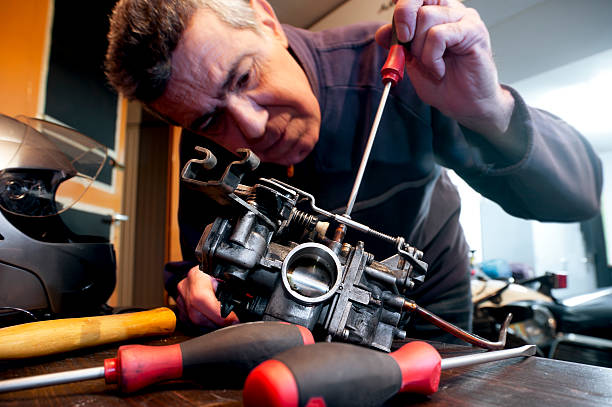Congratulations if you own a car with a carburetor. Today, almost all cars that have a carbureted motor are considered historical items.
Fuel injection systems have replaced carburetors in modern vehicles. They are more efficient, reliable, and don’t need to be warmed up. These days, all good things.
There’s something primal in removing the air filter from a big engine, and then watching the throttle cable move back to the top of the carburetor. You can hear the “roar” of the horsepower.
Here’s a little more information on the carburetor specialist in Auckland, whether you have one or not.
How does a carburetor work?
Carburetors have been used in the automotive industry for decades, and they are still preferred in classic cars, muscle cars, and other classics, because they are easy to repair, replace, and work on. The carburetor is a mechanical device that does not use any electronics or computers. It bolts directly onto the motor. The carb’s mechanism is controlled by cables and vacuum systems.
The carburetor is used to mix air and fuel before sending it into the engine’s cylinders. This mixture ignites the vehicle. The carburetor is located on top of the engine block, beneath the air filter. It operates by a combination between vacuum power and cable controls.
The carburetor’s cable is connected to the accelerator pedal. By pressing the gas pedal, you are literally forcing the carburetor open and allowing more air to enter. This also allows more fuel into the carburetor, increasing the power and speed of the engine.
In a carburetor, the air is forced through a “venturi” or bottleneck. The air is accelerated, creating a vacuum. This vacuum draws fuel from the reservoir or float chamber into the jet where it is mixed with air and flows into the cylinder. The fuel-air mixture ignites, pushing the piston to make the car go “vroom-vroom”.
What are the different types of carburetors?
Simple carburetors have only one venturi. Some carburetors have “double barrels” or “quad carbs,” which operate two or four venturi simultaneously to increase power.
The reason for this is that a large displacement engine requires more fuel. In some carburetors, the four barrels can be used in a progressive manner, with the two “primary barrels” always running and the two “secondary barrels” opening at higher speeds. This allows the barrels to open up when needed, and conserve fuel when not.
What causes an automobile to backfire?
It can be frightening to hear a loud bang coming out of your exhaust or from under the hood, especially if it is coming from a classic or collectible vehicle. You may also have a carburetor problem, or it might need a little tweaking.
Short answer: a fuel mixture (or fuel and air) has ignited outside a cylinder. This can happen in either the intake or exhaust system. It takes some diagnostic work to find out why a car might backfire.
Backfires can be caused by a fuel-air mixture that is either too lean, or too rich. A backfire could be caused by a problem with the engine valves, timing or spark plug wiring. It may also be a fuel pump issue. A few backfires may be caused by a buildup of debris in the system. But if your engine is causing kabooms regularly, you should have it checked out.

